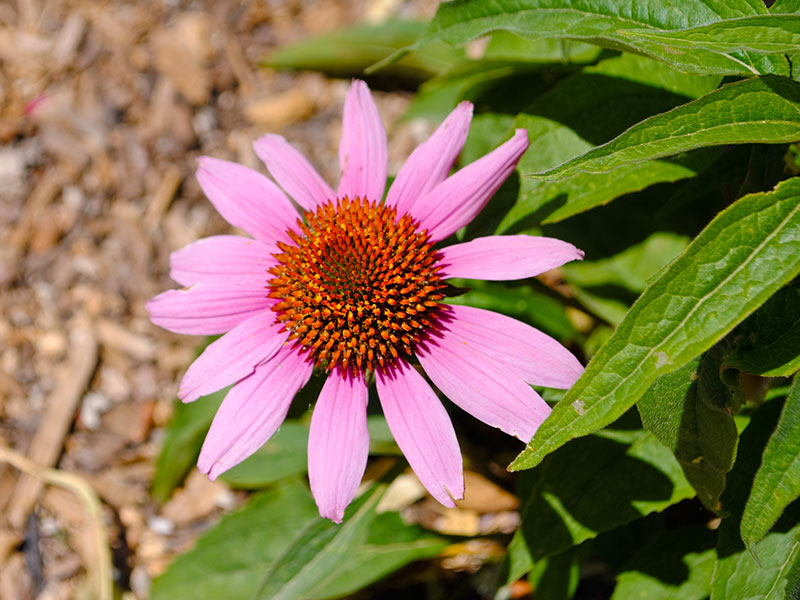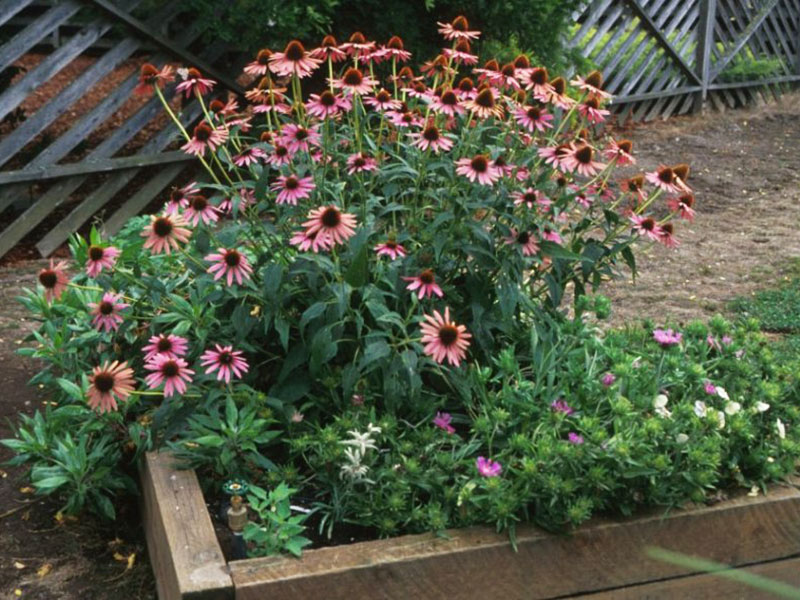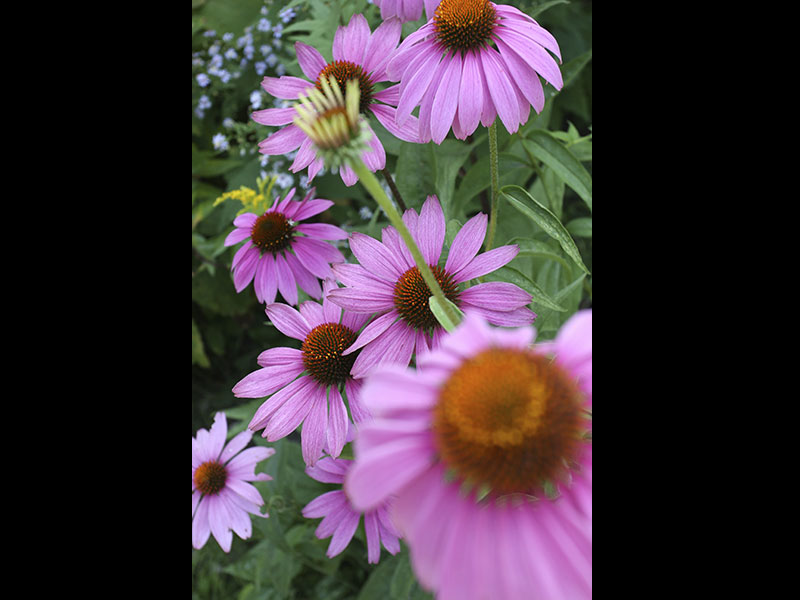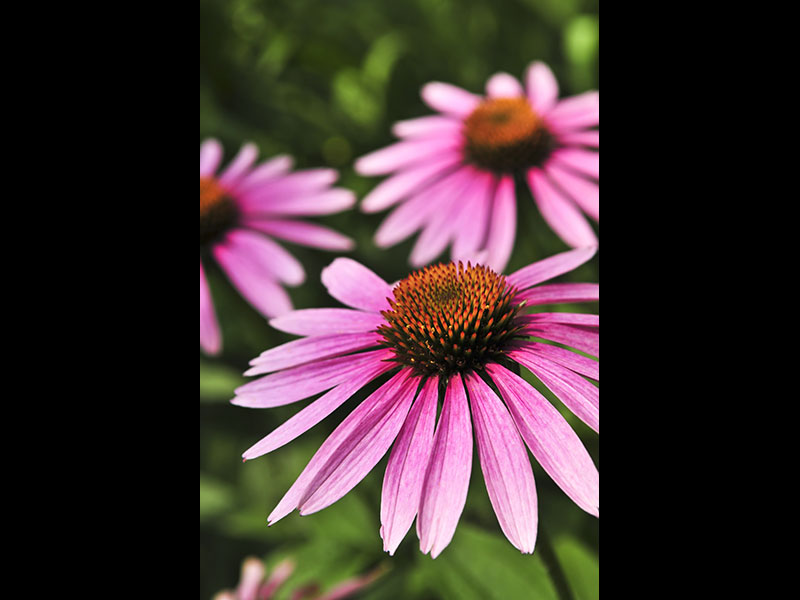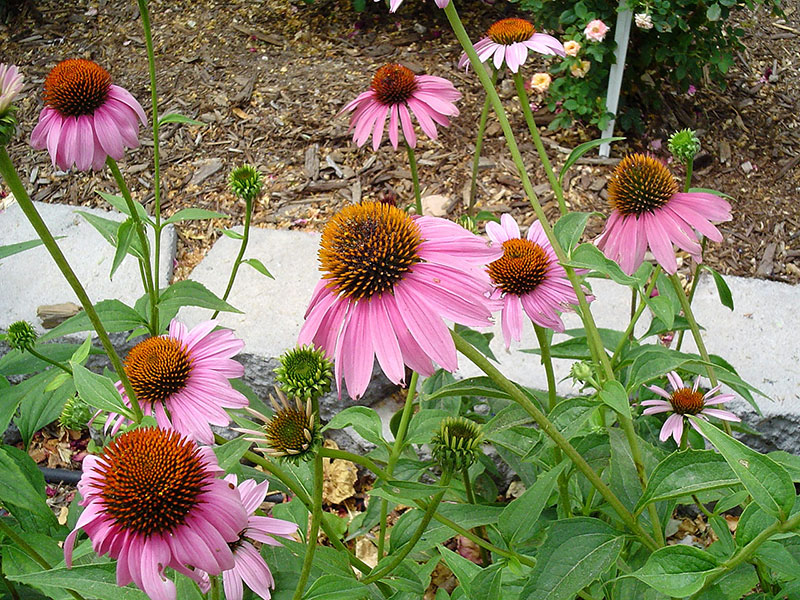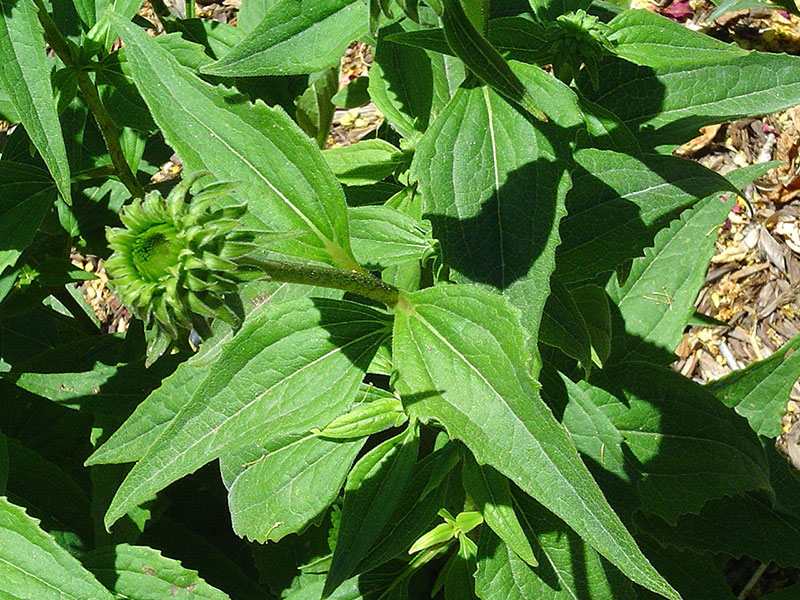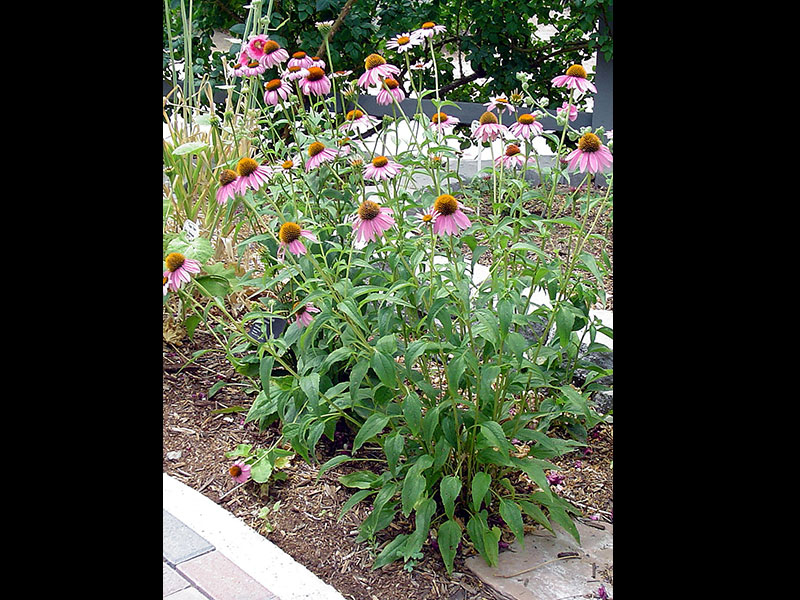Find plants
My list (0)
Purple Coneflower, Coneflower
Echinacea purpurea
A robust perennial grown for its flowers. The lance-shaped, dark green leaves have a course, sandpapery texture. A single flower sits atop each stem. Lavender petals surround the spiny central dome which starts out yellow and matures to a dark red-brown. The dome turns a brown-black and the petals fall off as the seeds mature. Heads can be remove when the petals fade or can be left in place as the seeds attract song birds. May reseed into the landscape in favorable conditions. In our area, it may die back to the ground or the foliage may persist somewhat through the winter depending on how cold it gets. Cut to the ground in winter or early spring to allow for fresh growth. Prefers amended soils with good drainage and organic surface mulch. Needs regular water during the growing season. Does best with some afternoon shade in the low desert. Clumps may need to be divided every 3-4 years. Good in raised beds, borders and wildflower gardens. Makes nice cut flowers and the stems and roots are used in herbal extracts. Varieties with white, yellow, orange, or red petals are also available.
- Plant type: Perennial
- Maintenance level: Low
- Water requirement: Medium
- Sun exposure: Full, Part Sun, Morning Sun
- Height range: 2–4 Feet
- Width range: 1–3 Feet
- Canopy value: 3 ft²
- Growth rate: Medium
- Seasonal habit: Semi-Evergreen, Semi-Deciduous
- Flower color: Orange, Pink, Yellow, Red, White, Purple
- Flower season: Summer, Autumn
- Fruit color: Brown, Black
- Fruit season: Autumn, Winter
- General foliage color: Green
- Design style: Patio Plants, Pollinator Plants
- Hardiness cold tolerance: -50 °F
- Soil preference: Sand, Loam, Well Drained, Dry
- Native location: Eastern North America
- PH preference: Neutral, Not Particular
- Sunset zones: A2, A3, 1, 2, 3, 4, 5, 6, 7, 8, 9, 10, 11, 12, 13, 14, 15, 16, 17, 18, 19, 20, 21, 22, 23, 24
- USDA hardiness zone: 2a, 2b, 3a, 3b, 4a, 4b, 5a, 5b, 6a, 6b, 7a, 7b, 8a, 8b, 9a, 9b, 10a, 10b
New Search

